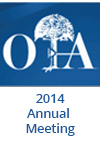
OTA 2014: Enrollment difficulty to compare ORIF & arthroplasty for acetabular fracture

OTA 2014: Enrollment difficulty to compare ORIF & arthroplasty for acetabular fracture
ORIF Versus Arthroplasty of Geriatric Acetabular Fractures: Results of a Randomized Controlled Feasibility Study
CONFERENCE ACE REPORTS
This ACE Report is a summary of a conference presentation or abstract. The information provided has limited the ability to provide an accurate assessment of the risk of bias or the overall quality. Please interpret the results with caution as trials may be in progress and select results may have been presented.
Synopsis
A randomized study at a single trauma center was conducted to determine if it would be feasible to perform a full-scale randomized controlled trial comparing open reduction and internal fixation (ORIF) with total hip arthroplasty (THA) and concomitant ORIF in patients over 60 with an acetabular fracture. Patients presenting to the trauma center were screened over a 2.5 year time frame. Of 65 patie...
To view the full content, login to your account,
or start your 30-day FREE Trial today.
FREE TRIAL
LOGIN
Forgot Password?
Explore some of our unlocked ACE Reports below!

Learn about our AI Driven
High Impact Search Feature
Our AI driven High Impact metric calculates the impact an article will have by considering both the publishing journal and the content of the article itself. Built using the latest advances in natural language processing, OE High Impact predicts an article’s future number of citations better than impact factor alone.
Continue



 LOGIN
LOGIN

Join the Conversation
Please Login or Join to leave comments.